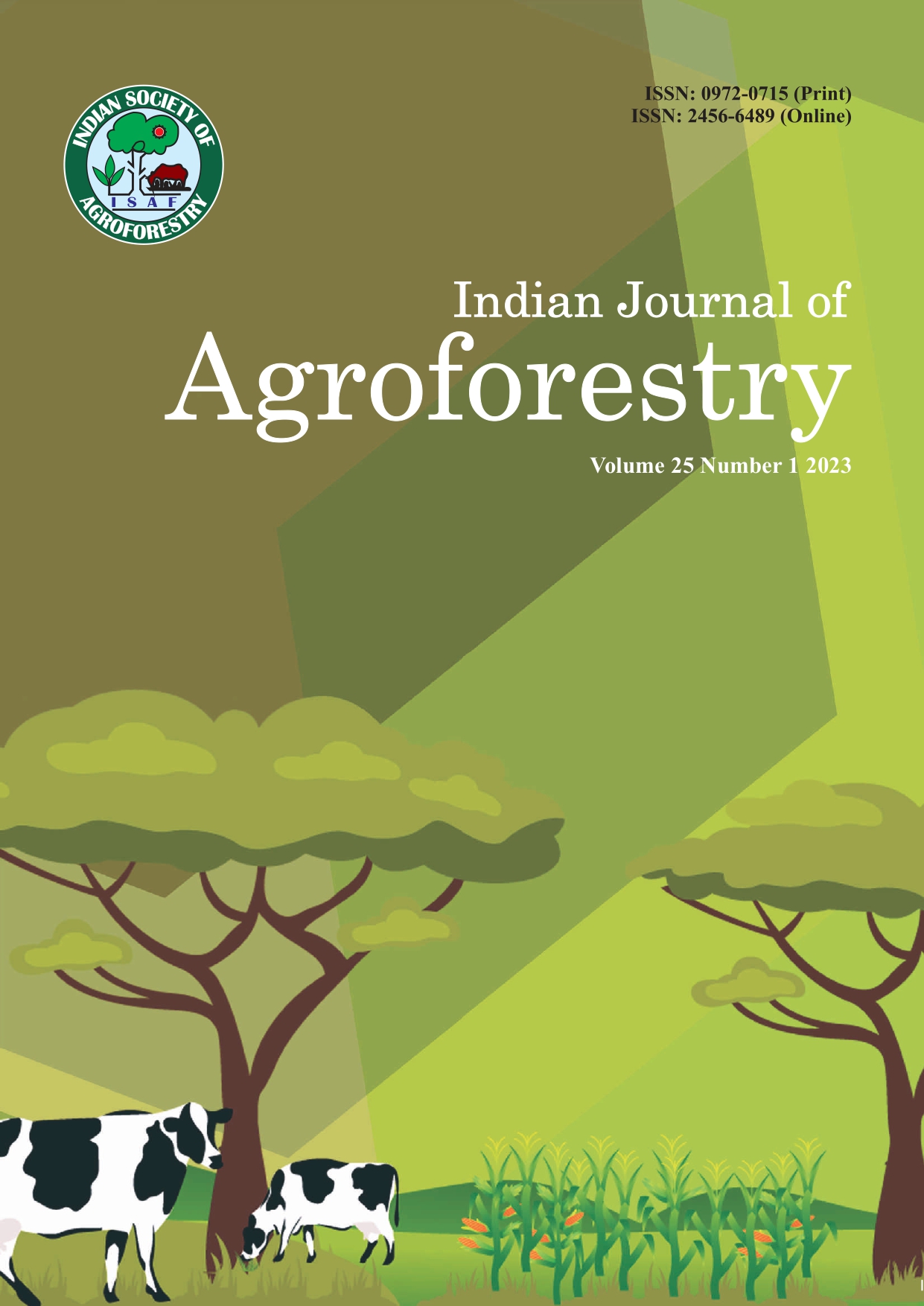Clonal plants revealed higher physiological efficiencies in photosystem protection and antioxidant activities than seedling plants of Pongamia pinnata to cope with hot summer climate
Keywords:
Biofuel; dry hot summer; environmental constraints; oxidative stress; photosynthesis.Abstract
Emphasis on trees, especially multipurpose tree species are being given lately for their potential to cope with climatic aberrations across different land use systems including agroforestry. Considering the potential adverse changing climate scenarios and for future preparedness for the promising trees, it is important to understand how the trees will be able to cope with climatic extremities effectively for adapting the environmental constraints. In this direction, the experiment was conducted with the multipurpose biofuel tree species Pongamia pinnata (L.) Pierre at the field of central research farm of Central Agroforestry Research Institute, Jhansi to decipher its physiological efficiencies to get the mechanistic insights during dry hot summer extremities. Major photosystem activities were highly downregulated and the inhibited photosystem functions have been evidenced in the decrease in CO2 assimilation rate (Pn), effective PS2 quantum yield (ΦPS2), dark adapted maximum potential quantum yield of photosystem-2 (Fv/Fm) and other associated photosystem functioning. Pn, Fv/Fm and ΦPS2 in clonal plants during summer were about 70%, 25% and 34% higher than the seedling plants respectively. To cope with oxidative stress, peroxidase activity was about 58% higher in clonal plants in hot summer than the seedling plants. The clonal plants revealed better photosystem activities during the hot summer than the seedling plants indicating the better tolerance potential in it. From our experiment, it has been distinctly observed that the clonal plants maintained better physiological functioning in the hot dry climate by protecting the photosystems from cellular oxidative stress. To cope with hot and dry atmospheric climate comparatively higher physiological efficiencies providing better photosystem protection in clonal plants have been corroborated with the higher antioxidant activities leading to relatively less oxidative damage. The findings will be useful in selection of multipurpose tree species to cope with the climatic constraints.
